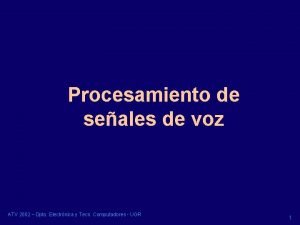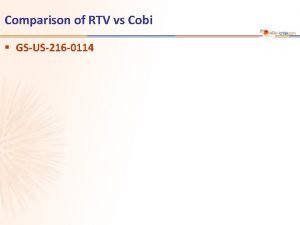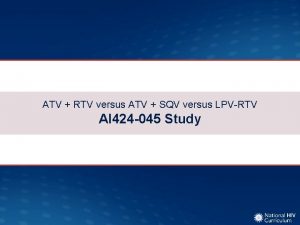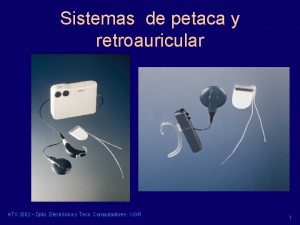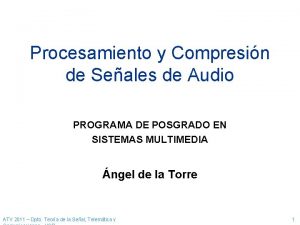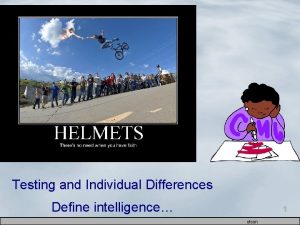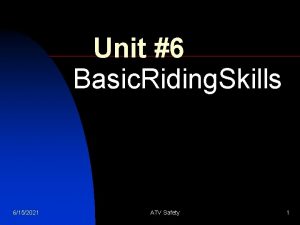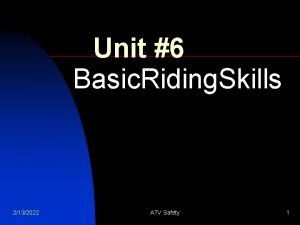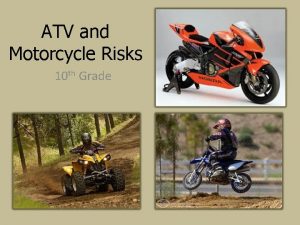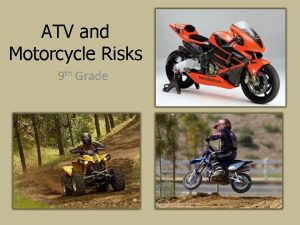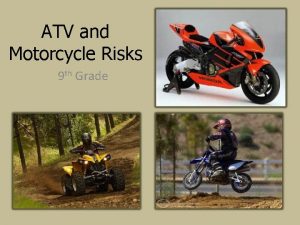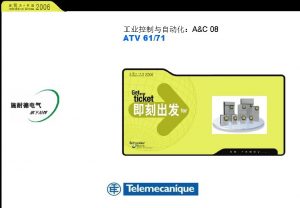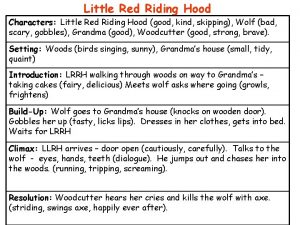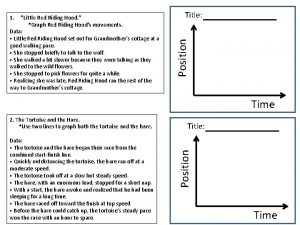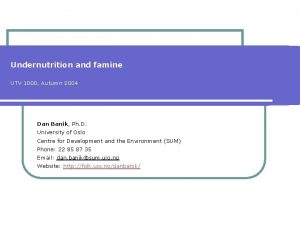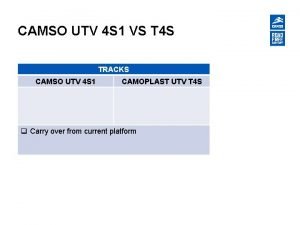RIDING SMART ATV AND UTV SAFETY ON THE

















- Slides: 17

RIDING SMART ATV AND UTV SAFETY ON THE FARM

Learning Objectives Today’s session will cover ATV & UTV: • • • Characteristics Uses Safety gear Safe operation Farm usage Hazards on the farm

Uses of ATV & UTV on the Farm • • Hauling feed, straw, mulch, etc. Pulling wagons Apply pesticides Mowing Snow removal Herding livestock Fence repair

Fatalities & Injuries • From 1982 - 2011, 688 ATV related fatalities • 327 in 2011 • 590 in 2010 • 684 in 2009 • 2, 865 ATV related fatalities of children younger than 16 years of age. • 25% of total • In 2011 est. 107, 500 ATV related emergency department- treated injuries • 27% children under 16 • UTV- Between January 2003 and September 2010, 169 fatalities and 299 injuries

Characteristics of ATV • • Handlebars 4 wheels Low pressure tires One seat – Straddle the seat • No passengers

Other Characteristics of ATVs Drive lines: • Drive mechanisms vary greatly. • Several combinations of clutches, drive shafts, and differential locks • Higher speeds and sharp turns can increase the risk of side overturns if the drive wheels are locked together for traction Power and Speed: • Engines vary in size from 100 cc to 700 cc or greater • Can travel over 50 mph • High-speed operation of the ATV increases the risk of loss of control and rollovers

Characteristics of UTV • Steering wheel • Passenger seating • Four, five, or six wheels depending upon its use. • Occupant protective structure • Seat belt • Cargo bed

Other Characteristics of UTVs • Made for work purposes – Hauling feed, mulch materials, and supplies • A tool and not a toy • Safe operation of the utility vehicle requires the same safe work habits as used with tractors, skid steer loaders, and ATVs • Recommend that no operator younger than age 16 should operate the vehicle • Always wear seat belt

ATV & UTV Safety Gear • • • DOT helmet Gloves Goggles Long-sleeves Long pants Over ankle boots

ATV Operation and Safety • Never carry passengers – increases the risk of overturn injury and death. – A second person changes the center of gravity of the machine and the machine’s steering ability. • Know the machine’s limitations • Avoid public roads. • Check your state’s vehicle code for use of the ATV as an agricultural machine. • Safety training for ATV use is the first step in being a qualified ATV operator. – http: //www. atvsafety. org/ – At a minimum, use the operator’s manual

Safe Use of Utility Type Vehicles • Do not drive near ditches or embankments – If the ditch is 6 feet deep, stay back from the edge by at least 6 feet • Never carry more passengers than the UTV is designed for – Do not permit extra riders to ride in the cargo box – Use the handholds – Buckle the seat belt

Safe Use of Utility Type Vehicles • Cargo can raise the utility vehicle’s center of gravity – Risk of an overturn increases – Drive slowly and turn smoothly • Secure the load from shifting sideways to prevent overturn • Avoid driving on steep slopes. It is safer to drive uphill or downhill rather than across a slope • Reduce speed over rough terrain to prevent the utility vehicle from bouncing – Operator and riders have been thrown from utility vehicles

Hazards on the Farm • Loose, broken strands of wire • Add-on equipment – Hooking on equipment – Flying objects • Applying pesticides • Herding livestock • Ditches, rough terrain

Summary • ATV/ UTVs are useful tools around the farm. • Injuries and fatalities can result when used incorrectly. • Always be familiar with your ATV/ UTV and it’s features. • Always wear proper gear when riding or operating. • Only carry passengers when seating is designed for them. • Unique hazards exist on farms and when using an ATV/UTV for farm chores.

References • Website- www. ATVsafety. gov • Safe Operations of Utility Type Vehicles (UTVs)http: //ohioline. osu. edu/aex-fact/pdf/0597_1. pdf • ATVs in Ohio All- Terrain Vehicles: Laws, Regulations, and Rules to Ride By (AEX-597) • http: //ohioline. osu. edu/aex-fact/0597. html

For More Information OSU Ag Safety & Health The Ohio State University Ag Engineering Building 590 Woody Hayes Drive Columbus, Ohio 43210 -1057 Email: jepsen. 4@osu. edu Phone: 614 -292 -6008 Website: agsafety. osu. edu

This project was supported by the USDA’s National Institute of Food and Agriculture (NIFA) Rural Health and Safety Education Grant Program- grant number 201246100 -20144.


